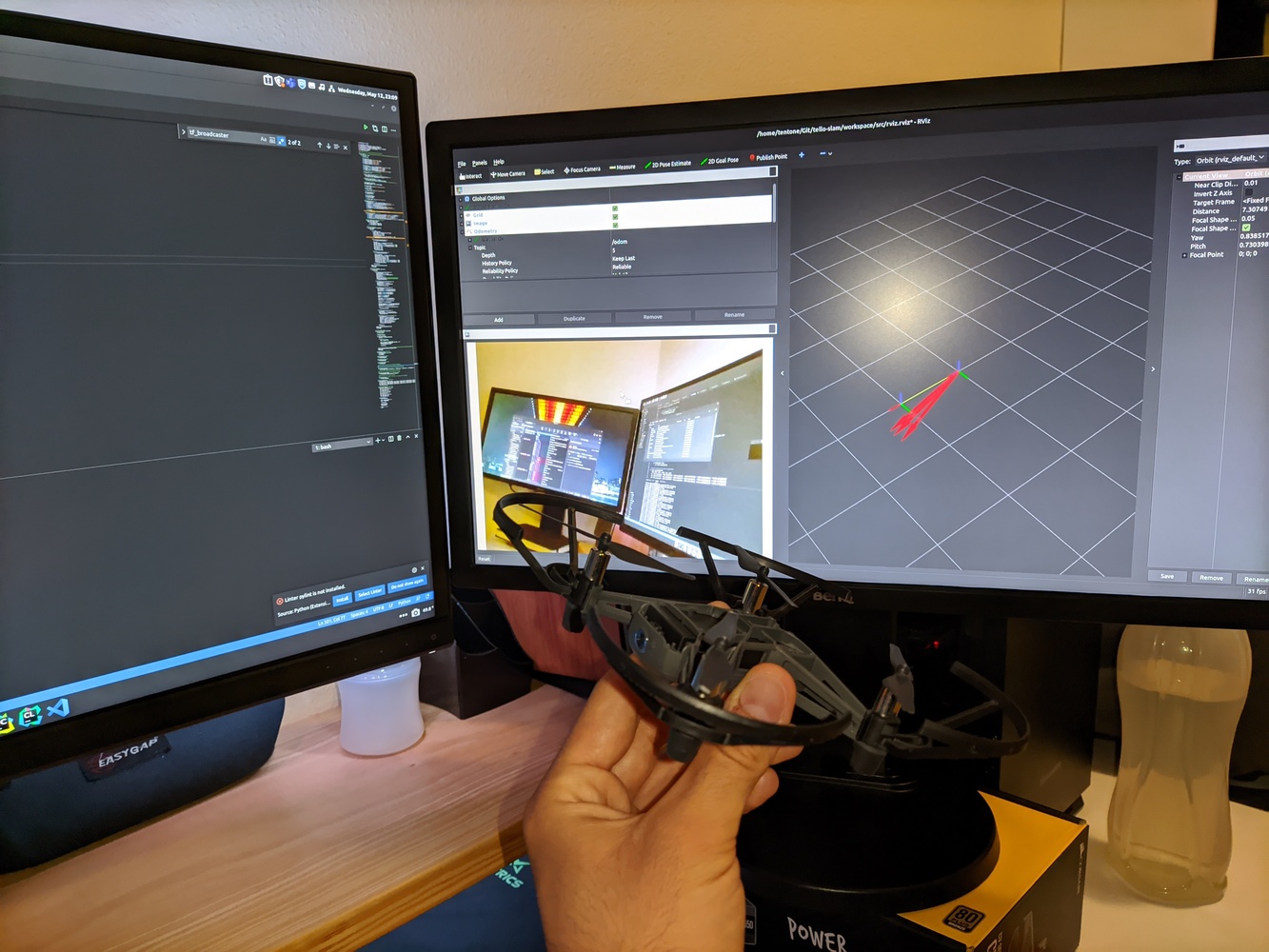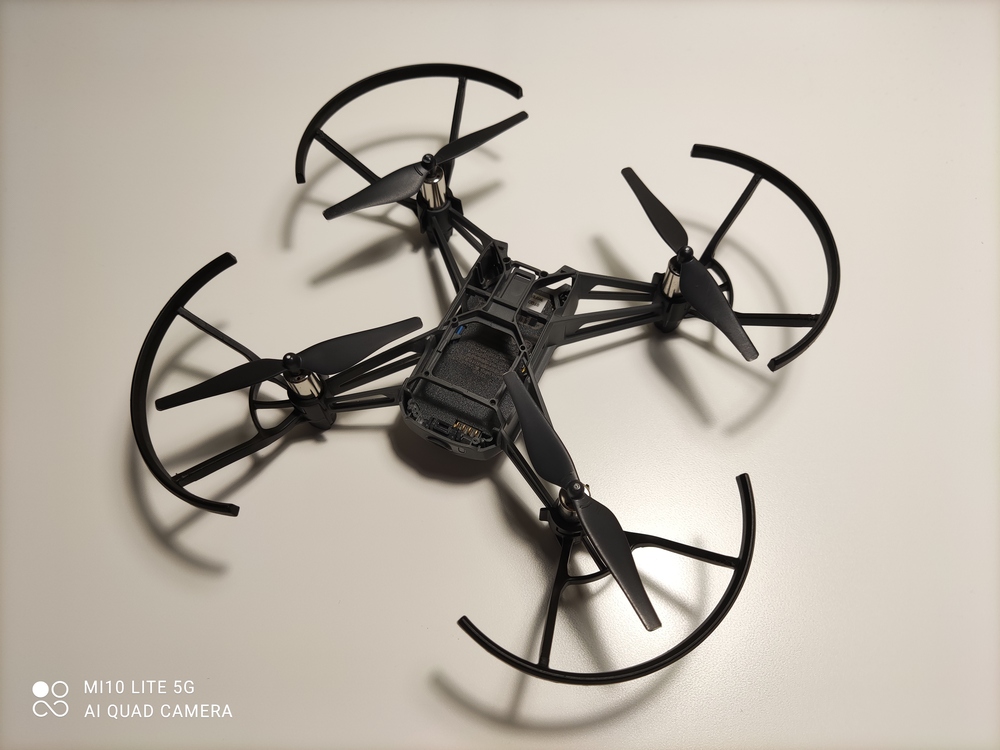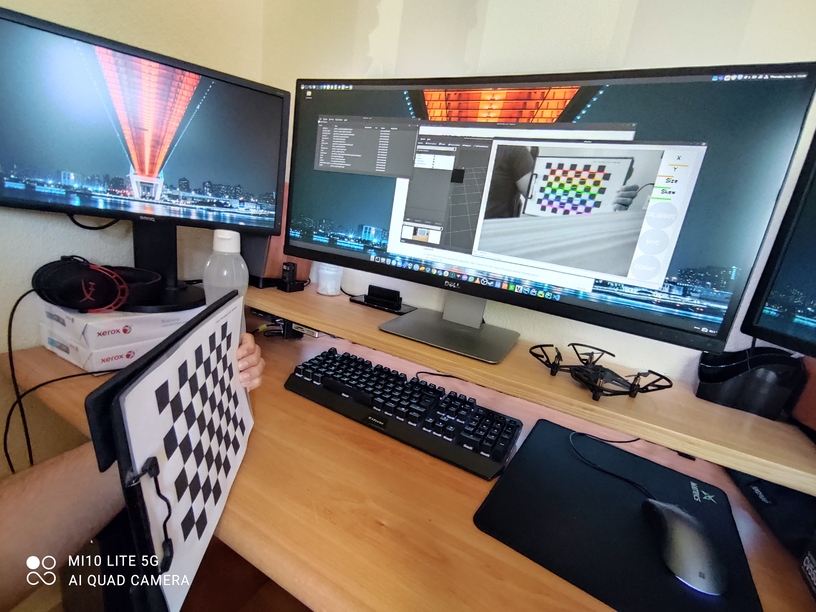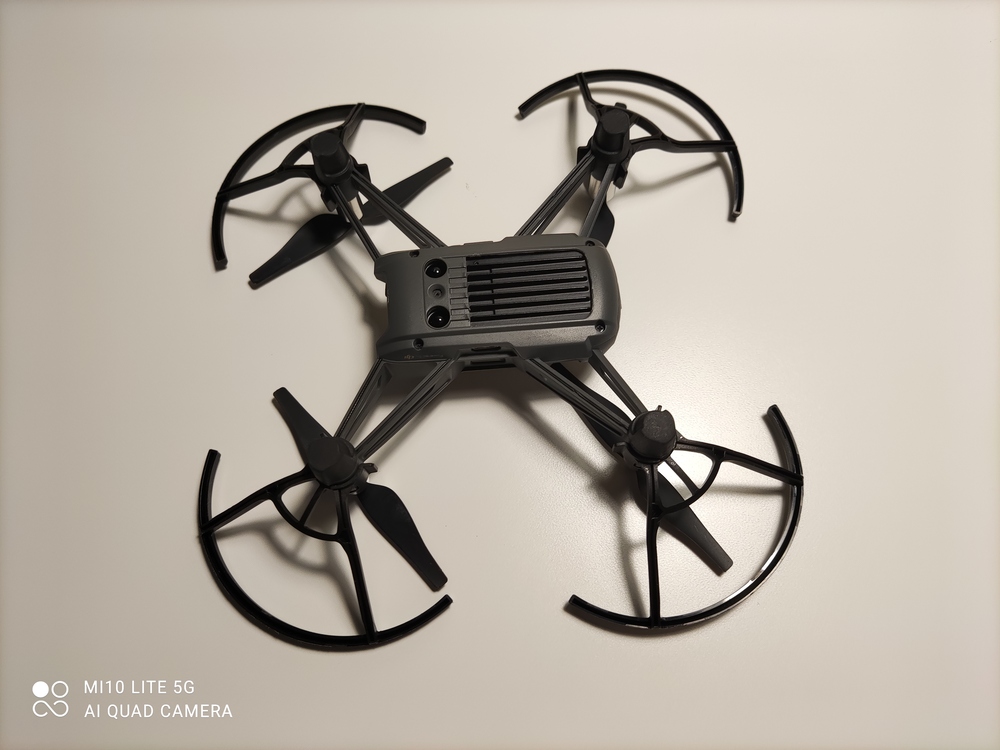- DJI Tello driver for ROS 2 based on DJITelloPy that uses the official SDK for the drone.
- Can be used to control multiple drones both using the swarm functionality (only for Tello EDU) or using multiple WLAN with regular Tello drones.
- This project was developed as a way of learning ROS 2 and evaluate the viability of moving other in progress projects from ROS 1 to ROS 2.
- Ii is recommended to update the Tello firmware to the latest version available
- Project workspace is divided into sub-workspaces that contain different logic.
tellopackage is the main package, includes access to the drone information, camera image and control.tello_msgpackage defines custom messages to access specific Tello data.- Defines the
TelloStatus,TelloIDandTelloWifiConfigmessages
- Defines the
tello_controlpackage is a sample control package that displays the drone image and provides keyboard control.- T used for takeoff, L to land the drone, F to flip forward, E for emergency stop, WASD and arrows to control the drone movement.
- Bellow is the list of topics published and consumed by the
tellopackage - The list of published topics alongside their description and frequency. These topics are only published when some node subscribed to them, otherwise they are not processed.
| Topic | Type | Description | Frequency |
|---|---|---|---|
| /image_raw | sensor_msgs/Image | Image of the Tello camera | 30hz |
| /camera_info | sensor_msgs/CameraInfo | Camera information (size, calibration, etc) | 2hz |
| /status | tello_msg/TelloStatus | Status of the drone (wifi strength, batery, temperature, etc) | 2hz |
| /id | tello_msg/TelloID | Identification of the drone w/ serial number and firmware | 2hz |
| /imu | sensor_msgs/Imu | Imu data capture from the drone | 10hz |
| /battery | sensor_msgs/BatteryState | Battery status | 2hz |
| /temperature | sensor_msgs/Temperature | Temperature of the drone | 2hz |
| /odom | nav_msgs/Odometry | Odometry (only orientation and speed) | 10hz |
| /tf | geometry_msgs/TransformStamped | Transform from base to drone tf, prefer a external publisher. | 10hz |
- The list of topics subscribed by the node, these topics can be renamed in the launch file.
| Topic | Type | Description |
|---|---|---|
| \emergency | std_msgs/Empty | When received the drone instantly shuts its motors off (even when flying), used for safety purposes |
| \takeoff | std_msgs/Empty | Drone takeoff message, make sure that the drone has space to takeoff safely before usage. |
| \land | std_msgs/Empty | Land the drone. |
| \control | geometry_msgs/Twist | Control the drone analogically. Linear values should range from -100 to 100, speed can be set in x, y, z for movement in 3D space. Angular rotation is performed in the z coordinate. Coordinates are relative to the drone position (x always relative to the direction of the drone) |
| \flip | std_msgs/String | Do a flip with the drone in a direction specified. Possible directions can be "r" for right, "l" for left, "f" for forward or "b" for backward. |
| \wifi_config | tello_msg/TelloWifiConfig | Configure the wifi credential that should be used by the drone. The drone will be restarted after the credentials are changed. |
- The list of parameters used to configure the node. These should be defined on a launch file.
| Name | Type | Description | Default |
|---|---|---|---|
| connect_timeout | float | Time (seconds) until the node is killed if connection to the drone is not available. | 10.0 |
| tello_ip | string | IP of the tello drone. When using multiple drones multiple nodes with different IP can be launched. | '192.168.10.1' |
| tf_base | string | Base tf to be used when publishing data | 'map' |
| tf_drone | string | Name of the drone tf to use when publishing data | 'drone' |
| tf_pub | boolean | If true a static TF from tf_base to tf_drone is published | False |
| camera_info_file | string | Path to a YAML camera calibration file (obtained with the calibration tool) | '' |
- To allow the drone to be used for 3D vision tasks, as for example monocular SLAM the camera should be first calibrated.
- A sample calibration file is provided with parameters captures from the drone used for testing but it is recommended to perform individual calibrations for each drone used.
- Calibration can be achieved using the camera_calibration package. Calibration pattern can be generated using the calib.io pattern generator tool.
ros2 run camera_calibration cameracalibrator --size 7x9 --square 0.16 image:=/image_raw camera:=/camera_info- Take as many frame as possible and measure your check board grid size to ensure good accuracy in the process. When the process ends a
calibrationdata.tar.gzwill be created in the/tmppath.
- Launch files in ROS2 are now defined using python code. To launch the main node of the project add the following code to your
launch.pyfile.
Node(
package='tello',
executable='tello',
namespace='/',
name='tello',
parameters=[
{'tello_ip': '192.168.10.1'}
],
remappings=[
('/image_raw', 'camera')
],
respawn=True
)- The motor drivers in the DJI Tello overheat after a while when the drone is not flying. To cool down the drivers i have removed the plastic section on top of the heat spreader (as seen in the picture).
- If you are comfortable with leaving the PCB exposed removing the plastic cover should result in even better thermals.
- If possible place the drone on top of an old computer fan or use a laptop cooler to prevent the drone from shutting down due to overheating.
- To install the driver download the code from git, install dependencies using the
script/install.shscript. - After all dependencies are installed build the code and and install using
colconas usual or use thescript/build.shandscript/run.shto test the code.
- The drone is equipped with a IMU and a camera that can be used for visual SLAM in order to obtain the location of the drone and a map of the environment.
- ORB SLAM 2 is a monocular visual based algorithm for SLAM that can be easily integrated with the Tello drone using this package.
- The wrapper provided alongside with this repository is based on the alsora/ros2-ORB-SLAM2 project using the alsora/ORB_SLAM2 modified version of ORB Slam that does not depend on pangolin.
- To run the monocular SLAM node after installing all dependencies and building the package run.
ros2 run ros2_orbslam mono <VOCABULARY FILE> <CONFIG_FILE>- The vocabulary file can be obtained from the ORB_SLAM2 repository (
ORB_SLAM2/Vocabulary/ORBvoc.txt). - Sample configuration files can be found inside the package at
orbslam2/src/monocular/config.yamlfor monocular SLAM.
- Run the install script to setup the ROS 2 (Foxy Fitzroy) environment.
- Check the ROS2 Tutorials page to learn how to setup workspace and create packages.
-
To install dependencies of the packages available in a workspace directory
srcrunrosdep install -i --from-path src --rosdistro foxy -y -
To build workspace you can use the command
colcon build, some useful arguments forcolcon build:--packages-up-tobuilds the package you want, plus all its dependencies, but not the whole workspace (saves time)--symlink-installsaves you from having to rebuild every time you tweak python scripts--event-handlers console_direct+shows console output while building (can otherwise be found in thelogdirectory)
- To create a new ROS2 package (C++ or Python) for development move to the
srcpackage and run
# CPP Package
ros2 pkg create --build-type ament_cmake --node-name <node_name> <package_name>
# Python Package
ros2 pkg create --build-type ament_python --node-name <node_name> <package_name>rqt_topicUsed to monitor topics and their values in a listrqt_graphDraw the graph of connection between the currently active nodes and explore communication between themrvizVisualize topics in 3D space.
- Bags can be used to record data from topics that can be later replayed for off-line testing. Bags can be manipulated using the
ros2 bagcommand. To
# Record a bag containing data from some topics into a file
ros2 bag record -o <bag_file_name> /turtle1/cmd_vel /turtle1/pose ...
# Check the content of a bag run the command
ros2 bag info <bag_file_name>
# Replay the content of some topics recorded into a bag file
ros2 bag play <bag_file_name>- To play ROS 1 bags in ROS 2 you will need to first install ROS 1, and the ROS bag adapter plugin. The the bags can be run using the command.
ros2 bag play -s rosbag_v2 <path_to_bagfile>- Calibration files provided were obtained using our test drone.
- To get your own calibration file use the ROS camera calibration tool
- When installing on ubuntu based distros it might be required to change the distro codename so that the
lsb_release -cscommand returns the correct ubuntu base distribution. - To change the output of the
lsb_releasecommand edit the/etc/os-releasefile. For ubuntu 20.04 the codename should befocal. - Edit the file to contain the value
UBUNTU_CODENAME=focal.
- Install WSL2 from the windows store or using the commands bellow, install Ubuntu 20.04 as the SO over the WSL overlay.
# Install WSL 2
Enable-WindowsOptionalFeature -Online -FeatureName Microsoft-Windows-Subsystem-Linux
# Enable WSL 2
dism.exe /online /enable-feature /featurename:VirtualMachinePlatform /all /norestart
# Check WSL version
wsl.exe --set-default-version 2
wsl -l -v- Install a VcXsrv Windows X Server to be used as a X11 display server required to run GUI applications.
- "Native opengl" unchecked
- "Disable access control" checked
- Create a shortcut for VcXSrv with the following parameters
"C:\Program Files\VcXsrv\vcxsrv.exe" :0 -ac -terminate -lesspointer -multiwindow -clipboard -wgl -dpi auto- To enable the access to the installed server add the display address to the
.bashrcfile
export DISPLAY="`grep nameserver /etc/resolv.conf | sed 's/nameserver //'`:0"
export LIBGL_ALWAYS_INDIRECT=0-
If you are using Visual Studio Code as and IDE you can configure for remote WSL development, allowing to debug code and interact with the WSL terminal.
-
If you require CUDA acceleration you can also install NVidia CUDA drivers for WSL2
-
If you get
Clock skew detected. Your build may be incomplete.while compiling the code run the following commands or install the wsl-clock tool to automatically fix the clock drift problems.
sudo apt install ntpdate
sudo ntpdate time.windows.com


